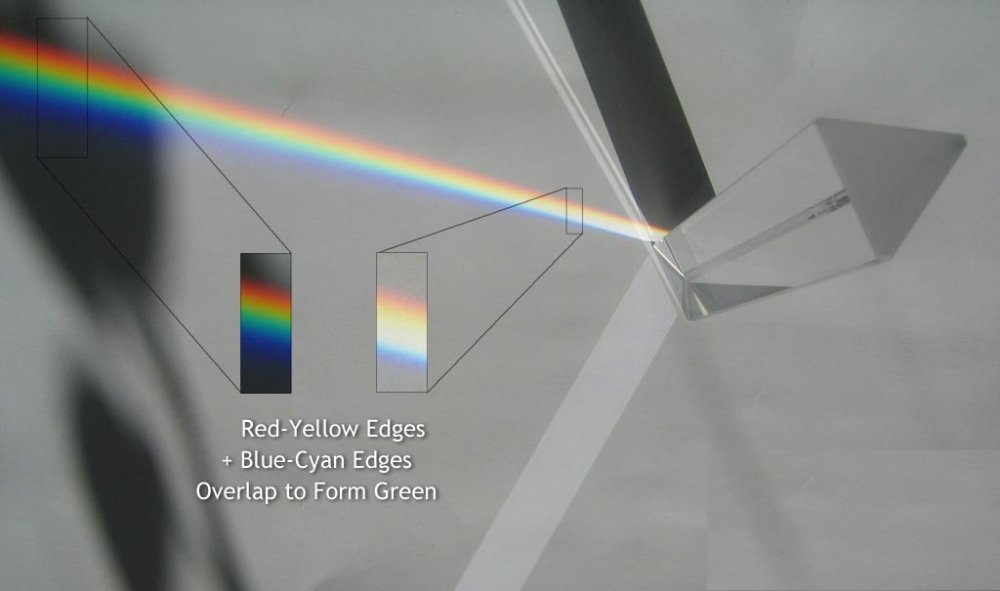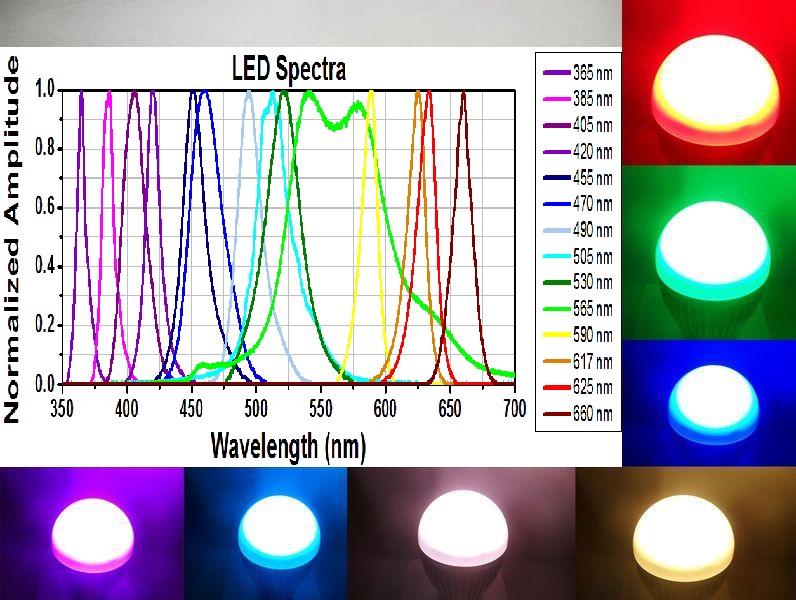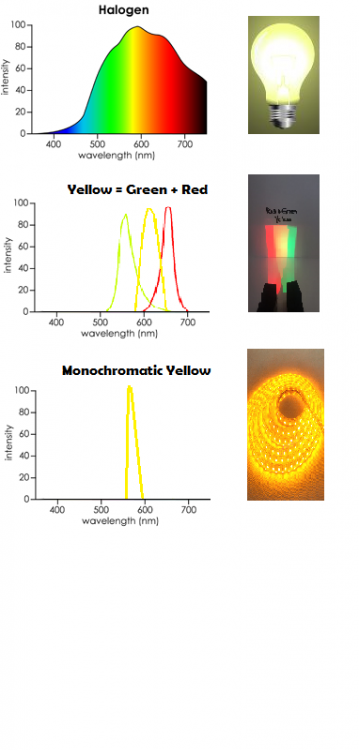

Hasan Özel
Members-
Posts
22 -
Joined
-
Last visited
Content Type
Profiles
Forums
Events
Everything posted by Hasan Özel
-
Let's approach your question scientifically, Why is white is the lightest color ? The answer is simple, because white objects reflect the most amount of visible light in all other colored objects. Lightness parameter is related to light reflectance of objects. If we turn back to your problem, yellow is the second lightest color next to white and it is also closest color to white. The reason of this is the light reflectance parameter. If we are talking about pure hues without lighter or darker shades, yellow colored object reflects the most amount of incoming lights, but you should be careful about this is only acceptable for pure hues. If your color reference does not include pure hues, this is not valid (i.e lighter shades of blue can be lighter than darker shades of yellow.) I add a link for more detailed information : https://www.sciencedirect.com/science/article/pii/S0307904X06001211
-
The computer screens create perfectly using this RGB lights.(i.e LG G5 smartphone can display 16M colors) Colors can not be obtained by combining monochromatic lights like red,green and blue are the main components of the daylight. I think the most logical explain is Mr. Swansont's answer : "The decision to break light up into seven colors was artificial. Three would also be artificial, and since the light is a continum of wavelengths, it would arguably be a worse representation." This is more about the wavelength, if we divide the visible spectrum to infinite range,we will obtained infinite "pure" colored light. In this context, "7" is just an artificial number for dividing visible light spectrum.
-
What is the reason for your answer is no,can you explain Mr.Studiot ?
-
According to this link https://www.the-scientist.com/?articles.view/articleNo/48584/title/Newton-s-Color-Theory--ca--1665/, Newton's rainbow forms the familiar ROYGBIV because he thought the range of visible colors should be analogous to the seven-note musical scale. Can we reduce the sunlight to three main light as blue (or violet) light, green light and red light ? (The others are overlaid of this lights due to irregular light diffraction according to Young-Helmholtz Theory.)
-
Is this valid for the other monochromatic light source like red,blue,purple ect.. ?
-
The colored lights(led or similar things) irradiate a narrower range according to its own emission spectrum. In that case,whatever the color of light, why does the light appears white in the center of all of them ?
-
It's okay,not a problem Knowledge and science are sacred,the best way to move them forward is discussing. Live Science so long
-
This is my fault, I update the picture But, I did not understand what do you mentioned. You want to say that monochromatic yellow(570-590 nm) and yellow=green + red have a different appearance like on a figure or a different thing ?
-
I don't know the percentage of grey at left hand sample, I got it from internet research. But I can write as a RGB color them.
-
I want to say behaves like as a monochromatic light. I guess I have misrepresented myself I have read your reference link Mr. , but I try to explain this : If yellow=green+red light reflects the combination of these lights range between 500-730 nm (like a halogen lamb which has a creamy-white color light) , the monochromatic yellow (570-590 nm) and yellow = green (500-570 nm) + red (620-730 nm) light would not be indistinguishable for eye. So I said yellow=green+red also behaves like a monochromatic yellow light. This is the key
-
I know the answer is no, but eye can not detects the difference. I mean if yellow=green+red light reflects the combination of these lights range between 500-730 nm, the monochromatic yellow (570-590 nm) and yellow = green (500-570 nm) + red (620-730 nm) light would not be indistinguishable for eye. So I said yellow=green+red also behaves like a monochromatic yellow light. This is the key These lights irradiate between green-red part of visible spectrum (500-730 nm) and can not irradiate anything violet-blue part. Because of this reason, this kind of lights looks like us yellowish-white.
-
As I underdstand it, we can illustrate this in the following way : The monochromatic red light range is between 620-730 nm and the peak wavelength is 637 nm. The monochromatic green light range is between 500-570 nm and the peak wavelength is 523 nm. According to the picture I added. When the monochromatic green light range end, shortly after monochromatic red light range start. Let's remember the famous double-slit experiment which is owned by Thomas Young R.I.P and the part of his wave theory of light. The nodal points intersected by waves with two different wavelengths act like a new wave between the wave lengths of the two. According to this idea, monochromatic yellow light(570-590 nm) and yellow=green(500-570)+red(620-730) looks like as a same light and yellow=green+red also has a narrow spectrum range like a monochromatic yellow light(570-590 nm).
-
I also understood what do you mean, but the main idea is like that : 1) monochromatic yellow (570-590 nm) and yellow = red + green is the same thing, because the range of red (620-730 nm) and green (500-570 nm) intersect and make again a narrow band like monochromatic yellow, not wider like 500-730 nm. Because of this reason, monochromatic yellow and red+green is indistinguishable for eyes. The colors of these lights are between yellow-orange color. 2) If we have a light source which irradiates between 500-730 nm like halogen headlight, this light has a continuous spectrum. The color of this light is creamy yellow-white. This is what I mean.
-
I think this is the answer of your question. There is a difference between monochromatic yellow (570-590 nm) and yellow(500-730 nm),but not as you think. Yellow = Green(500-570 nm) +Red (620-730 nm) light and monochromatic yellow(570-590 nm) is the same thing,because our eyes integrates Green+Red=Yellow and this combination of the light also a narrow range likes monochromatic yellow. But yellow(500-730 nm) is a different light,this light has a wider range and continuous spectrum. Both monochromatic yellow light and Yellow = Green(500-570 nm) +Red (620-730 nm) light has a lemonish yellow color. On the other hand, yellow(500-730 nm) has a creamy white color. This is the key. I think this is the correct explanation. I also searched halogen lamb light and I saw the spectrum of these lights lie between 500-730 nm and has a continuous spectrum which is described as yellow light from me(wider range between green-red spectrum). The monochromatic yellow(570-590 nm) and yellow=green(500-570 nm)+red(620-730 nm) lights are the same thing. The halogen yellow light(500-730 nm) appearance is different from both monochromatic yellow(570-590 nm) and yellow=green(500-570 nm) +red(620-730 nm). Our eyes perceives yellow=green+red like a monochromatic yellow(570-590 nm). It means when we mix red+green for obtaining yellow light,the range these two lights do not confederate,only intersect,so these red+green light also have a narrow range like monochromatic yellow(570-590 nm). I can add a figure for comparison these 3 lights. Yes I have reviewed, It occurs excellent information on color issues and colorimeter topic. Thank you for your special interest in this subject.
-
Thank you for your nice compliment Mr. Studiot I think the answer is correct which locates in Mehmet Saygın's comment. Your answer seems persuasive. I also wanted learn this difference. Thank you
-
I think there is difference what I said. In this article, yellow=red+green is aritmetic mean of green(500-570 nm) and (620-730). If we make this calculation yellow looks like(560-650) which is so close monochromatic yellow light(570-590 nm). If we describe a yellow=red+green between 500-730 nm,this light is different than the first two situations. I think this is the key, when we create a yellow light which is red+green, we also use two monochromatic light green(500-570 nm) and red(620-730 nm), so this is yellow=red+green make the same effect like monochromatic yellow light and this light is also has a narrow range which yellow(500-730 nm) described by me. I hope I can explain myself
-
I think this is the key, your reference link explains very well https://en.wikipedia.org/wiki/Color_vision#Mathematics_of_color_perception The yellow(500-730 nm)=red+green has a difference comparison to monochromatic yellow(570-590 nm) perhaps even narrower than 570-590 nm as Studiot said, if we go back to beginning of topic, monochromatic visible spectrum lights are dull like case 1, not bright as case 2. I understood this What are you think about this sir ? I also want to learn your ideas
-
So we can say that, If both of lights( monochromatic yellow(570-590 nm) and yellow=red+green(500-730 nm)) have the same intensity, yellow=red+green(500-730 nm) is more lighter(brighter) than monochromatic yellow(570-590 nm). Thank you I understood from your link that there is a difference between monochromatic yellow(570-590 nm) and yellow=red+green(500-730 nm). These two lights or colors which reflect these lights have different appearence from each other.
-
I miss,this was my fault,I am sorry for this. ☺️ Can we say like this,the yellow(500-730 nm)=red+green light is brighter than monochromatic yellow light (570-590 nm) ?
-
If there is a no difference between monochromatic yellow(570-590 nm) and yellow(500-730 nm)=red+green lights,is this also acceptable for objects which the first one is only reflecting monochromatic yellow light(570-590 nm) and the second one is reflecting wider range(500-730 nm) yellow=red+green ? If there is a no difference between monochromatic yellow(570-590 nm) and yellow(500-730 nm)=red+green lights,is this also acceptable for objects which the first one is only reflecting monochromatic yellow light(570-590 nm) and the second one is reflecting wider range(500-730 nm) yellow=red+green ?
-
The figure is symbolic to help explain the question. I want to say that the apperance of monochromatic lights yellow(570-590 nm) and cyan(475-495 nm) are the same or not,comparing to yellow(500-730 nm)=red+green and cyan(380-570 nm). I mean if we make two sample which the first one is only reflects monochromatic light(i.e yellow(570-590 nm) and the other reflect wider range(i.e yellow(500-730 nm)=red+green),are they have the same apperance ? Another point is that visible spectrum light components are dull as case 1 or bright as case two ? Because at electronical light device, yellow+blue or green+magenta or cyan+red combination makes white light but monochromatic combination can not.(i.e monochromatic yellow+monochromatic blue does not equals to white light) I mean, in fact yellow objects which looks like in case 2, not only reflects monochromatic yellow light also reflects a wider range between green-red part of spectrum (500-730 nm). If only reflects monochromatic yellow light,it looks like as case 1. This argument is true or false ? I know but this is just figure to help explain idea. We can take as electromagnetic spectrum case 1 and case 2. Is the electromagnetic spectrum as dull as case 1 or as bright as case 2 ?
-
Hi Everyone, I want to know that which one these case is correct, Case 1 or Case 2. I mean, Is the visible spectrum as bright as on the right side or as dull as on left side in reality ? For example,the appearance of monochromatic yellow (570-590 nm) and cyan (475-495 nm) light looks like as Case 1 or Case 2. In other words, Is there any difference between monochromatic yellow-cyan lights and [yellow=green+red(500-730 nm)]-[cyan=blue+green(380-570 nm)] lights shown like on figure ?







